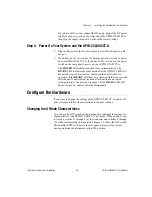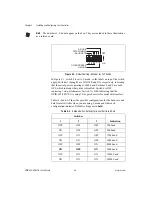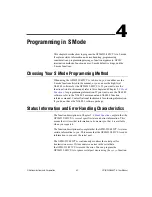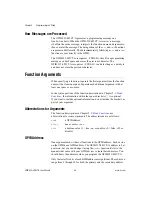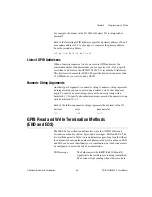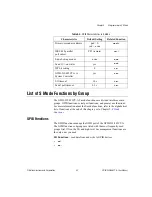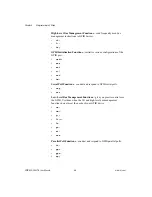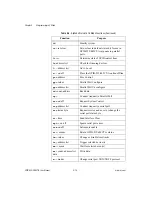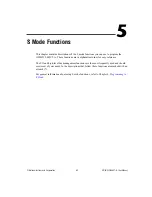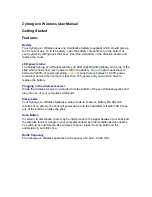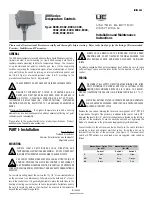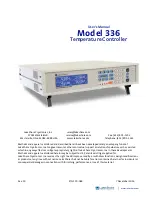
Chapter 4
Programming in S Mode
4-6
www.ni.com
byte accompanied by EOI*, regardless of the value
of the byte.
EOS character
The Talker sends an EOS (end-of-string) character
at the end of its data string. The Listener stops
receiving data when it detects the EOS character.
Either a 7-bit ASCII character or a full 8-bit binary
byte can be used.
The GPIB-232/485CT-A always terminates GPIB
rd
operations on the
END message. You can use the
eos
and
eot
functions to change GPIB read
and write termination methods.
Function Names
Each function name has been selected to indicate the function’s purpose
and make your programs easier to understand. However, if you want to
reduce some overhead in your program, you can use an abbreviation of the
name that includes only as much of the function name as is necessary to
distinguish it from other functions. This abbreviated form of the function
name is shown in bold text in the function tables and in the syntax portions
of the function descriptions.
S Mode Default Settings and Related Functions
Tables 4-1 and 4-2 list power-on characteristics of the GPIB-232/485CT-A
in S mode and the functions you can use to change those characteristics.
Table 4-1.
S Mode Serial Port Characteristics
Characteristic
Default Setting
Related Function
Echo bytes to serial port
no
echo
Ignore serial port errors
yes
spign
Send XON/XOFF
no
xon
Recognize XON/XOFF
no
xon



